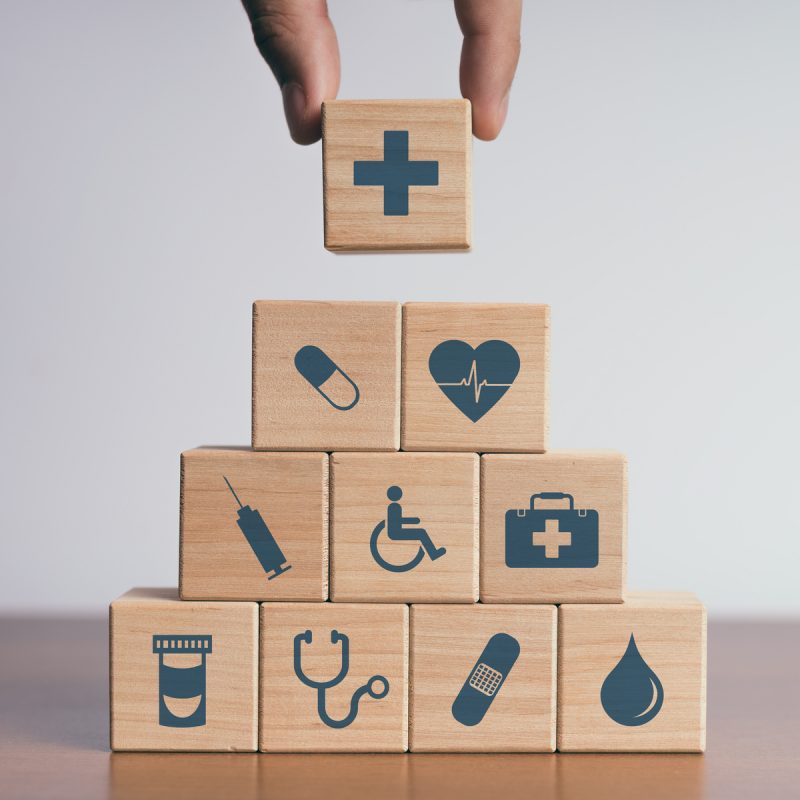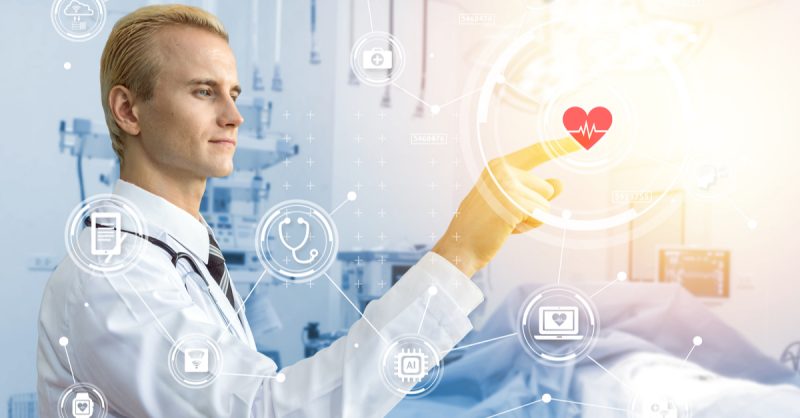Estimated reading time: 3 minutes
IoT & AI are taking over the healthcare industry. Though these two may appear very different in nature, these technologies work together in coordinating the success of medical procedures. Sensors, AI, and big data analytics are vital pieces to the pie for IoT with medical values. AI and Machine Learning are frequently adapted to manage and analyze continuous data streams. This is found to be critical in ensuring insights be presented to both patients and providers alike. Though these technologies have thoroughly developed throughout the years, there is still a long way to go. 
AI in Healthcare
The benefits to AI in healthcare will increase exponentially from automated operations to even precision surgery and preventative medical intervention, thanks to that of predictive diagnostics. AI is making its way towards reshaping the future.
AI reduces diagnostic errors and can cut errors out completely. It can accurately determine specific threats within cells, tissues and varying organs. With the integration of payment plans and insurance packages, patients are able to maintain a better understanding of procedures that are and aren’t covered.
As AI permeates more in the system, consumers may not even realize how it has influenced their care regimen, because these processes often happen behind the scenes. Compelling cases for AI within the Healthcare industry include the following examples of how it can be positively enforced.
Antibiotic Resistance: Machine Learning is utilized to identify genes that may cause this resistance in the bacteria. In coordination with EHRs, machine learning will study pre-symptomatic patters and alerts can be sent to providers immediately. |
Cardiology: An implanted defibrillator that monitors a patient’s heart rhythms can track the likeliness of a heart attack if prompted. These implants and/or wearables can be combined with EHRs for continuous patient patient monitoring, giving doctors more up-to-date data. |
EHRs: Voice recognition can replace the usage of keyboards, entirely. Speak instead of type. Vide-based image recognition will supplement EHRs, by providing additional insights into a patient’s condition. Take for example, if a patient were lying about their pain levels. These advanced EHRs can gauge those levels and compare them to what the patient is saying, to ultimately determine if opiate-seeking behaviors are involved. |
There are many challenges with AI in the healthcare industry, however. Providers need to trust the system and the algorithms involved throughout processes. Many end-users are skeptical about adopting such tools, without seeing any results beforehand. There is also reluctance on the patient side of things, as well. 
Not understanding how AI works and then panicking over its heightened intelligence range is a frequent problem at stake. Advanced AI solutions may prove themselves too costly is smaller and more rural environments, so the option may not even be available. ISVs are hopeful that the adoption of Smart AI solutions will change the future and acceptance of Healthcare everywhere and with everyone.
IoT in Healthcare
IoT sensors are segmented into several sectors: patient monitoring, diagnostics, clinical efficiency and many other applications. Providers are finding improvements in patient engagement increased accuracy in data analysis, enhanced disease management, advanced mode of locating treatment results and so much more.
With each coming day, hospitals are installing more and more IoT devices and tagged sensors into their daily operations. They are able to track the real-time status and location of equipment such as: Defibrillators, Wheelchairs, Nebulizers, Oxygen pumps and several other tools.
Connectivity is showing a surge in numbers throughout all healthcare facilities, just this year. Administrators turn to IoMT (Internet of Medical Things) to help existing staff to do THEIR job. Increasing the number of devices in hospitals creates a huge attack that could negatively impact patients’ safety and their private information. Maintaining a positive IoT and security system can mark networks as safe from attackers and hacks. 
IoT & AI: Going Forward
The healthcare industry is bringing integrated values, that come along with IoT and AI, into play. These technologies are delivering dynamic business prospects to the current climate. Though many may feel afraid of the unknown, it’s going to take ISVs and VARs the time and effort to educate on the what and keep developing towards smarter medicine.

